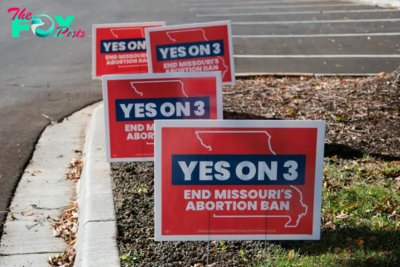Politics
Some states’ populations are very much like the US overall – including 5 key states in the 2024 presidential election
Five of the seven states widely expected to be political battlegrounds in the 2024 presidential election have populations very much like that of the U.S. overall, in a range of demographic and socioeconomic measures.
For decades, the presidential selection season has begun with the Iowa caucuses and the New Hampshire primary. But in recent years, that practice has been criticized for giving lead-off status in a nationwide election to two of the smallest and least racially and ethnically diverse states.
Those two states kicked off the election process again in 2024, though the Democratic Party did not officially participate in the New Hampshire primary, which President Joe Biden won as a write-in candidate.
Instead, the first official primary set by Democrats was in South Carolina, a state more like the U.S. than New Hampshire, according to our analysis of U.S. Census Bureau data.
Our research has found that there are states even more like the U.S. as a whole – and in fact New Hampshire is one of those least like the country overall. Our work provides a look at which states have a significant political voice in an election season, which ones don’t, and which ones might be worth paying more attention to.
Examining population data
Using data from the 2022 American Community Survey, a nationwide questionnaire survey conducted by the Census Bureau, we compared each state to the nation as a whole based on five characteristics:
- Racial and ethnic breakdown: the share of people who reported their race and ethnicity as Latino, non-Hispanic American Indian and Alaska Native, Asian, Black, Native Hawaiian and other Pacific Islander, white, some other race, or two or more races;
- Age-gender distribution: the share of people identified as males or females in various age groups from 0 to over 85, noting that the Census Bureau only offers two options for gender identity;
- Educational attainment: the share of people with grade school or high school education, some college, or a range of academic degrees;
- Household income: the share of households reporting their income in various ranges from less than US$10,000 to $200,0000 or more;
- Occupational distribution: the share of employed workers in various broad job sectors like farming, fishing and forestry; construction and extraction; or sales and related occupations.
For each characteristic, we used a statistical method called the dissimilarity index to determine how similar or dissimilar each state was from the country’s demographic and socioeconomic profile. A dissimilarity index score of zero would indicate that the state is exactly like the whole country. A score of 100 would indicate that it could not get any more different.
We ranked each state’s scores for each characteristic and then averaged those rankings to list the states in an overall order from most similar to most dissimilar.
Finding the similarities
It turns out that in 2022, Illinois was the state most like the entire country. Illinois resembled the nation more than any other state in its race-ethnicity breakdown, age-gender distribution and household income distribution. It was second-most like the country in terms of educational distribution, and fourth-closest in occupational distribution.
This was personally interesting to us because in the summer of 2009, one of us, Rogelio Sáenz, drove through Illinois, and was reminded by a road sign of the old rhetorical question, “Will it play in Peoria?” As far back as the 1880s, theater producers and others considered the Illinois city of Peoria a microcosm of the nation. In politics, the phrase was adopted to evoke “an ideal place to take the ‘pulse of the nation’ on political campaigns and proposed legislation,” as Peoria Magazine wrote in 2009.
Sáenz wondered back then whether the saying was based on any connection to reality. And it turns out that it is, at least if you look at the state Peoria is in: The population of Illinois is very like the population of the U.S. as a whole.

Five swing states among those most similar to the US
In general, swing or battleground states are those that have similar proportions of Democratic and Republican voters and enough people to have significant clout in the Electoral College. In 2024, there are seven of them.
Of particular notice is that five of the 10 states most similar to the U.S. are swing states for 2024. Illinois is not a swing state, but the next three are: North Carolina, Georgia and Arizona. And their fellow swing states Michigan and Pennsylvania are seventh and eighth, respectively. The remaining two at the top of the list are Oregon and Kansas. The two swing states not in the top 10 are Nevada and Wisconsin.
Taken together, the seven swing states have slightly more than one-third of the electoral votes needed to win the presidency. Because these states play a pivotal role in the election of the president, they are key focuses of campaign advertising and outreach, as well as candidate appearances.
Our analysis sheds light on the role demographic and socioeconomic characteristics have in determining which states are swing states. For instance, the five swing states that are among those most like the U.S. tend to have more racial and ethnic diversity than other states. They also include states that are very like the U.S. in terms of occupational, educational, age-gender and income data.
States less like the US
Our analysis also reveals how unlike the U.S. New Hampshire is. It’s 45th in the list.
South Carolina and Iowa, two other states with early roles in the presidential process, are 20th and 28th, respectively. But the two other swing states are nearby: Wisconsin and Nevada are ranked 23rd and 29th, respectively.
Very populous states such as California, Texas, Florida and New York are also different from the country as a whole, though the ways they vary differ. For example, California is similar to the U.S. on occupational distribution but much different on race and ethnicity. Texas is quite similar to the U.S. along socioeconomic lines but very different demographically. Florida resembles the U.S. with respect to race and ethnicity, education, and income but differs appreciably in age-gender composition and occupation. New York resembles the nation with respect to race and ethnicity but differs substantially on occupations.
A new perspective
The findings can help people think about the different types of diversity in the U.S. population of 336 million people.
And perhaps it can be used to influence future choices of which states become the homes of early presidential primaries and caucuses.
For instance, Illinois could make a compelling case for being the opening act in future presidential primary elections because it is a miniature of the nation as a whole. Over the course of 51 presidential elections, Illinois voters have cast ballots in favor of Democrats 25 times and Republicans 24 times, with splits in two more elections – and have picked the winning candidate 42 of those 51 times.
-

 Politics2d ago
Politics2d agoPolitical Scientist Dr. Ricky Jones: If Kamala Harris Won, Black People Would Have Another Excuse to Not Fight Back
-

 Politics2d ago
Politics2d agoAs He Staffs His Second-Term Administration, Trump Looks for Loyalty Above All
-

 Politics2d ago
Politics2d agoWhat to Know About Robert F. Kennedy Jr.’s Long History of Promoting Anti-Vaccine Views
-

 Politics3d ago
Politics3d ago‘Such Small Steps.’ States Without Citizen-Led Ballot Initiatives Leave Abortion-Rights Advocates With Little Recourse
-

 Politics3d ago
Politics3d agoWhat Trump’s Win Could Mean for Housing
-

 Politics3d ago
Politics3d ago‘Blacklash’ Over Kamala Harris Campaign Spending On Al Sharpton, Beyoncé, Megan Thee Stallion, And Other Celebs
-

 Politics3d ago
Politics3d agoMatt Gaetz Nomination Confirms Trump’s Revenge Talk Wasn’t Bluster
-

 Politics3d ago
Politics3d agoDon’t Give Trump Credit for the Success of the Biden Economy




















